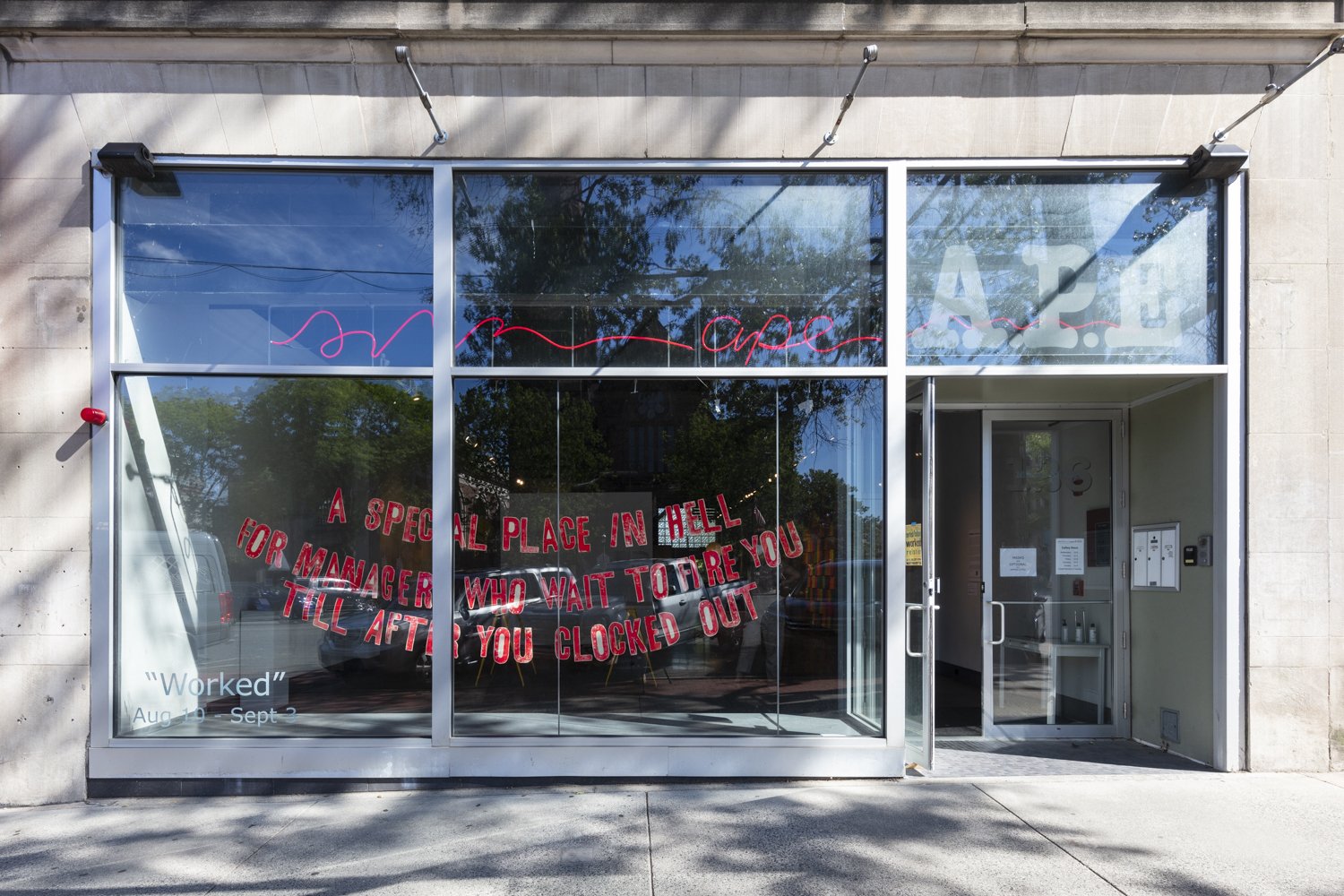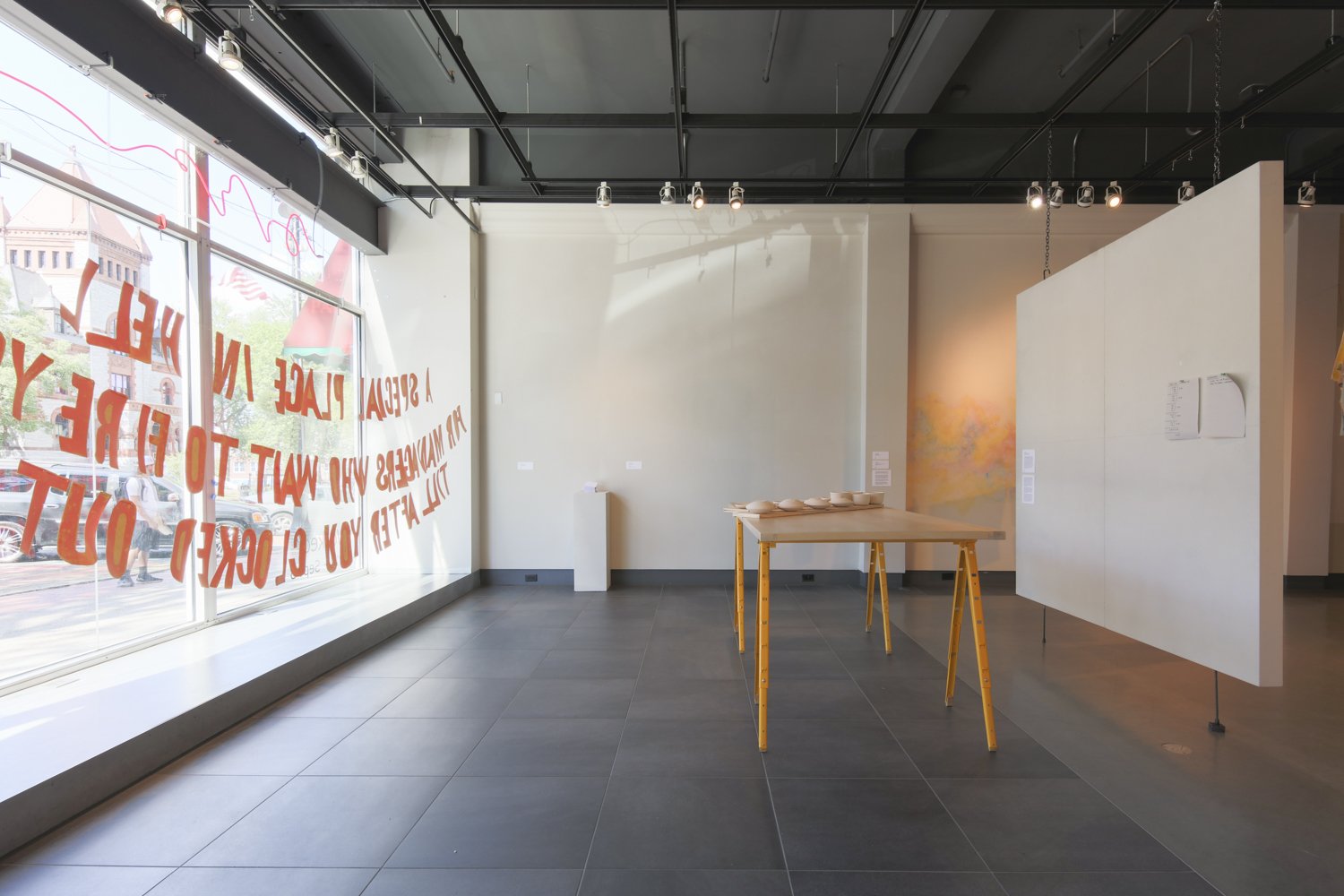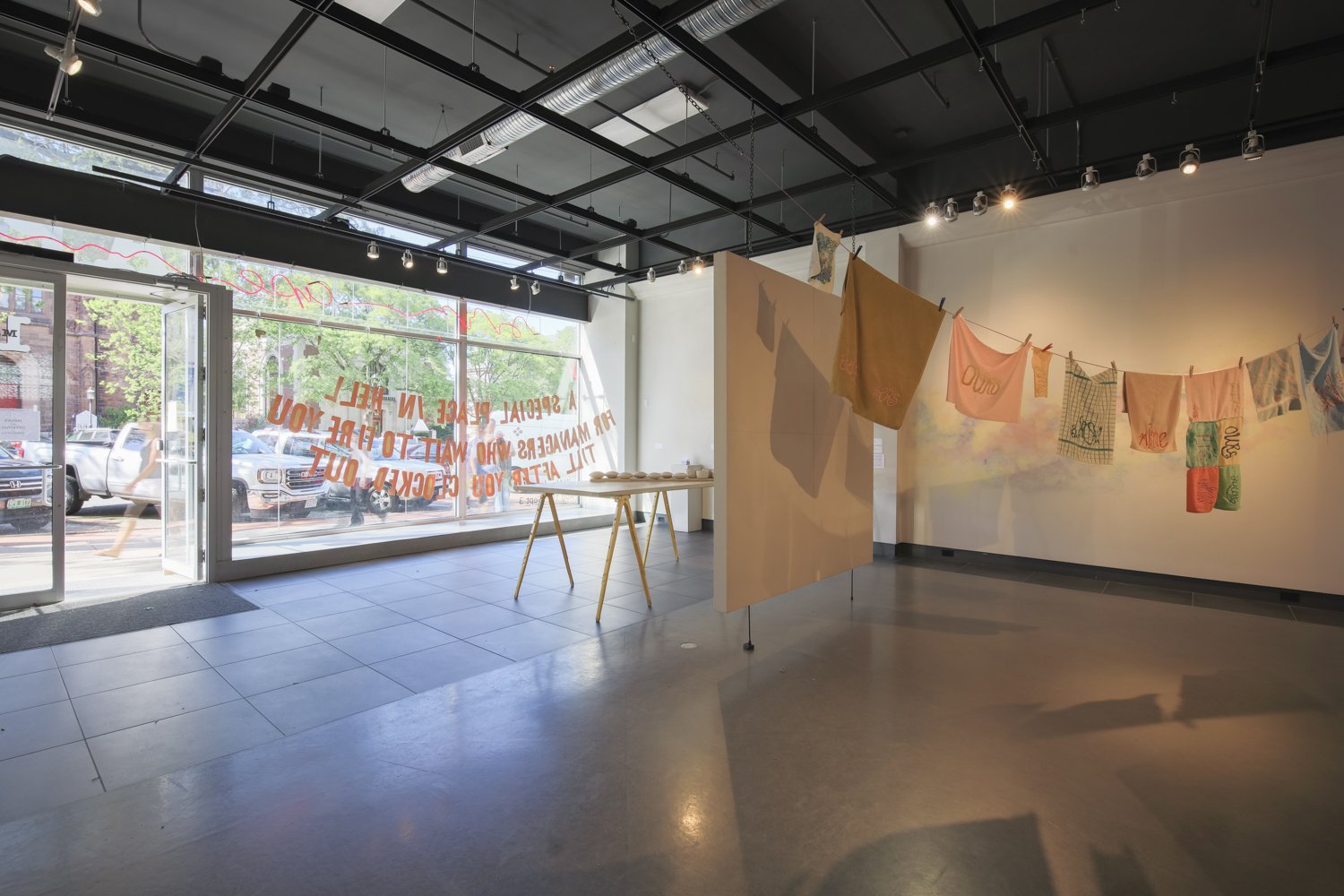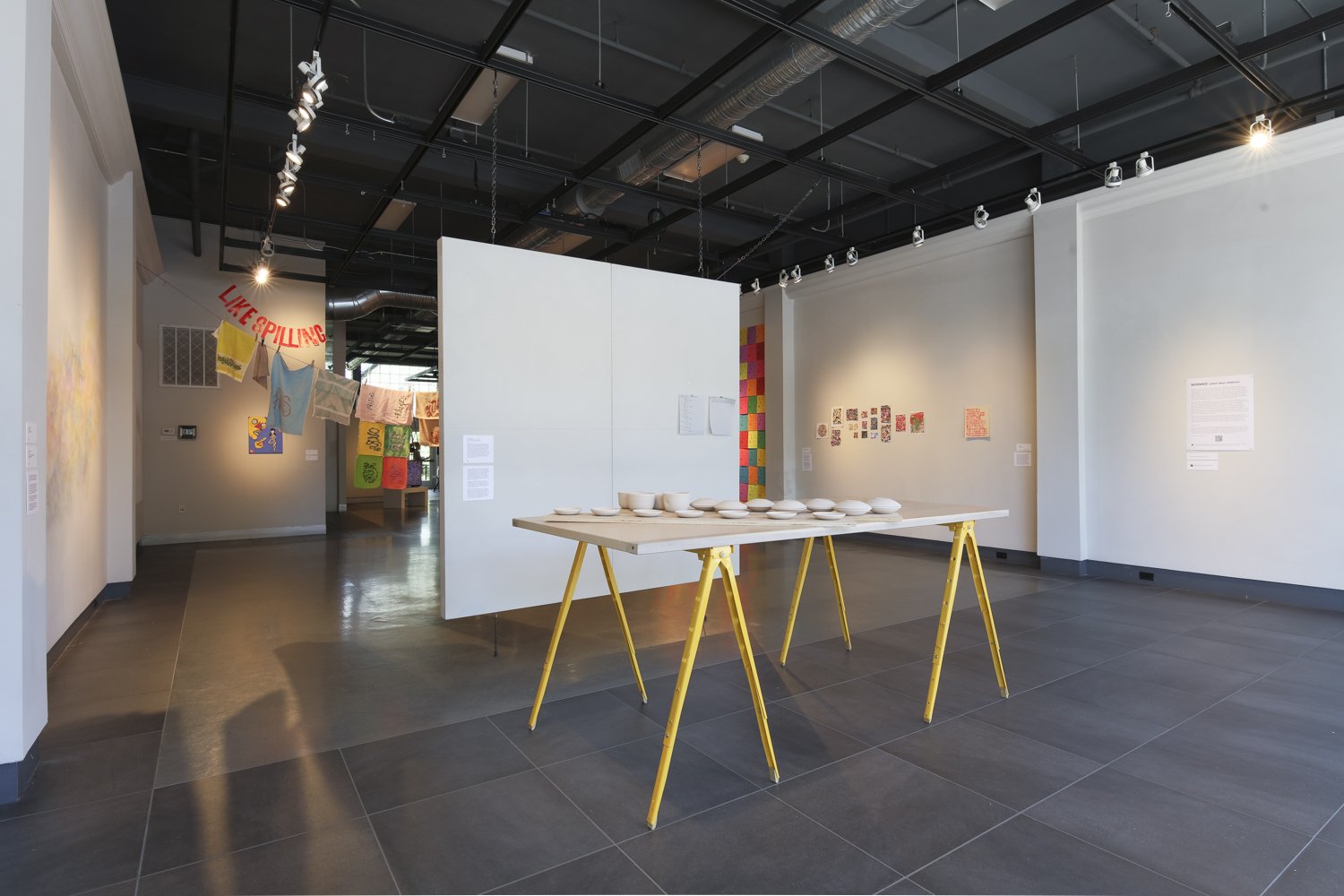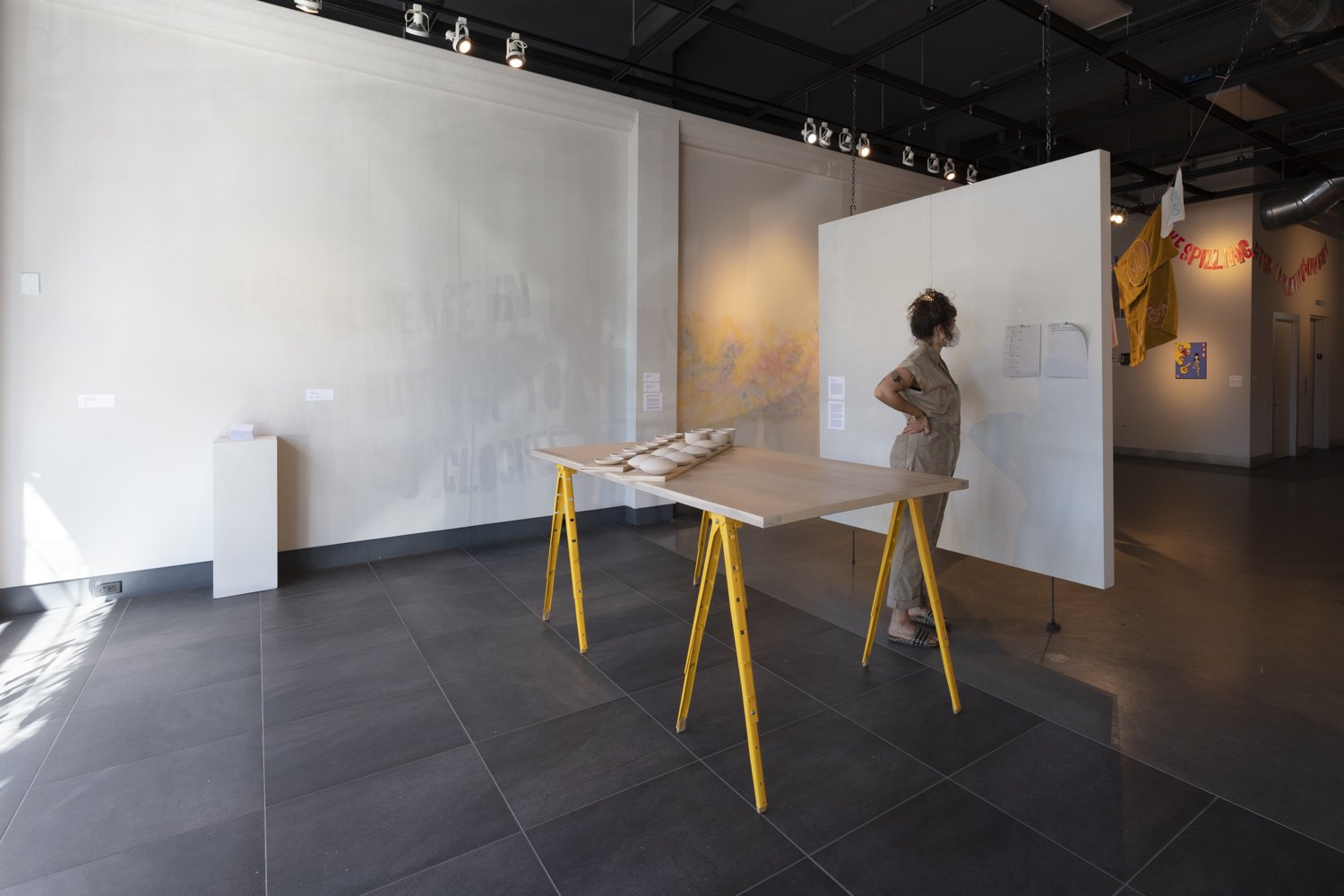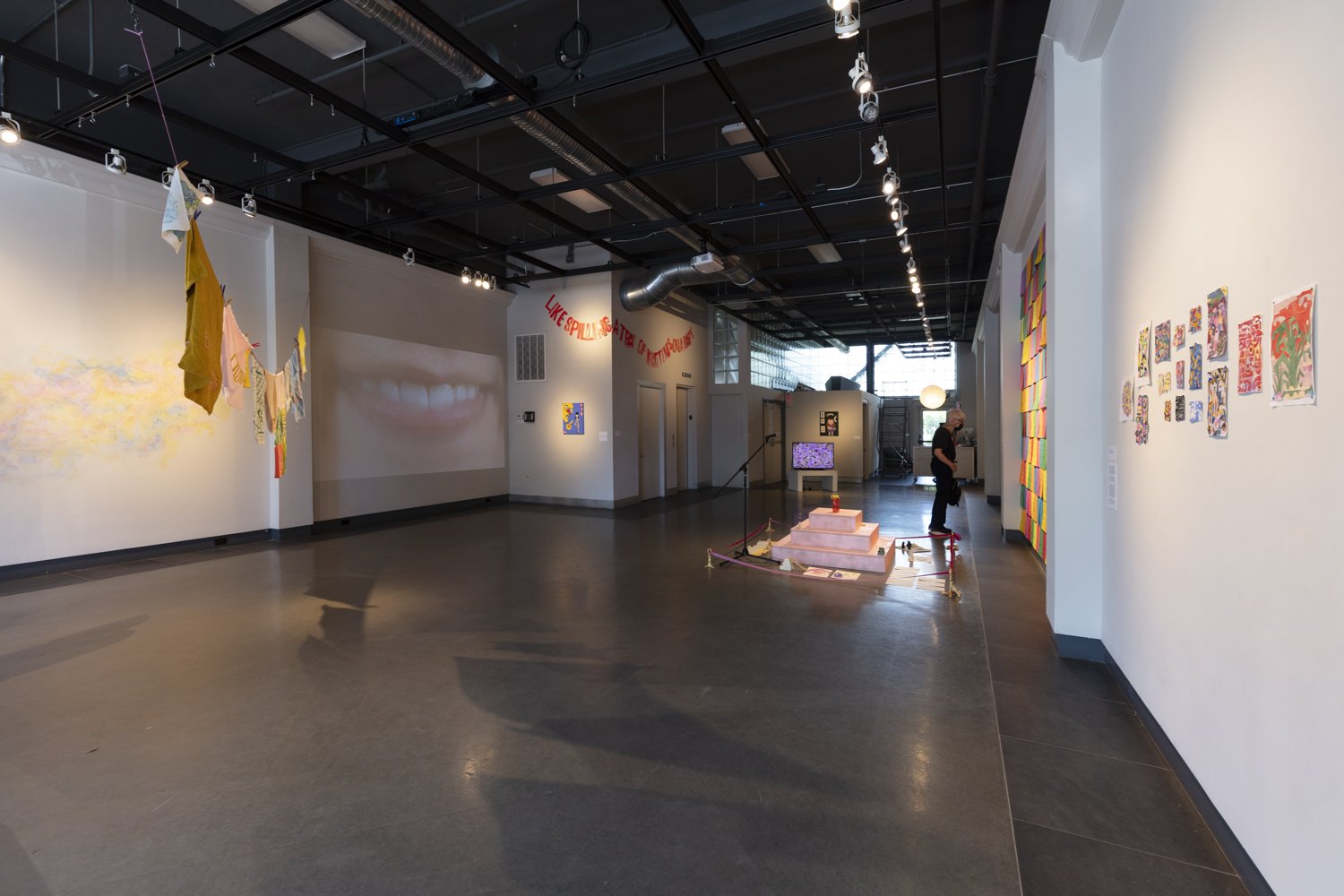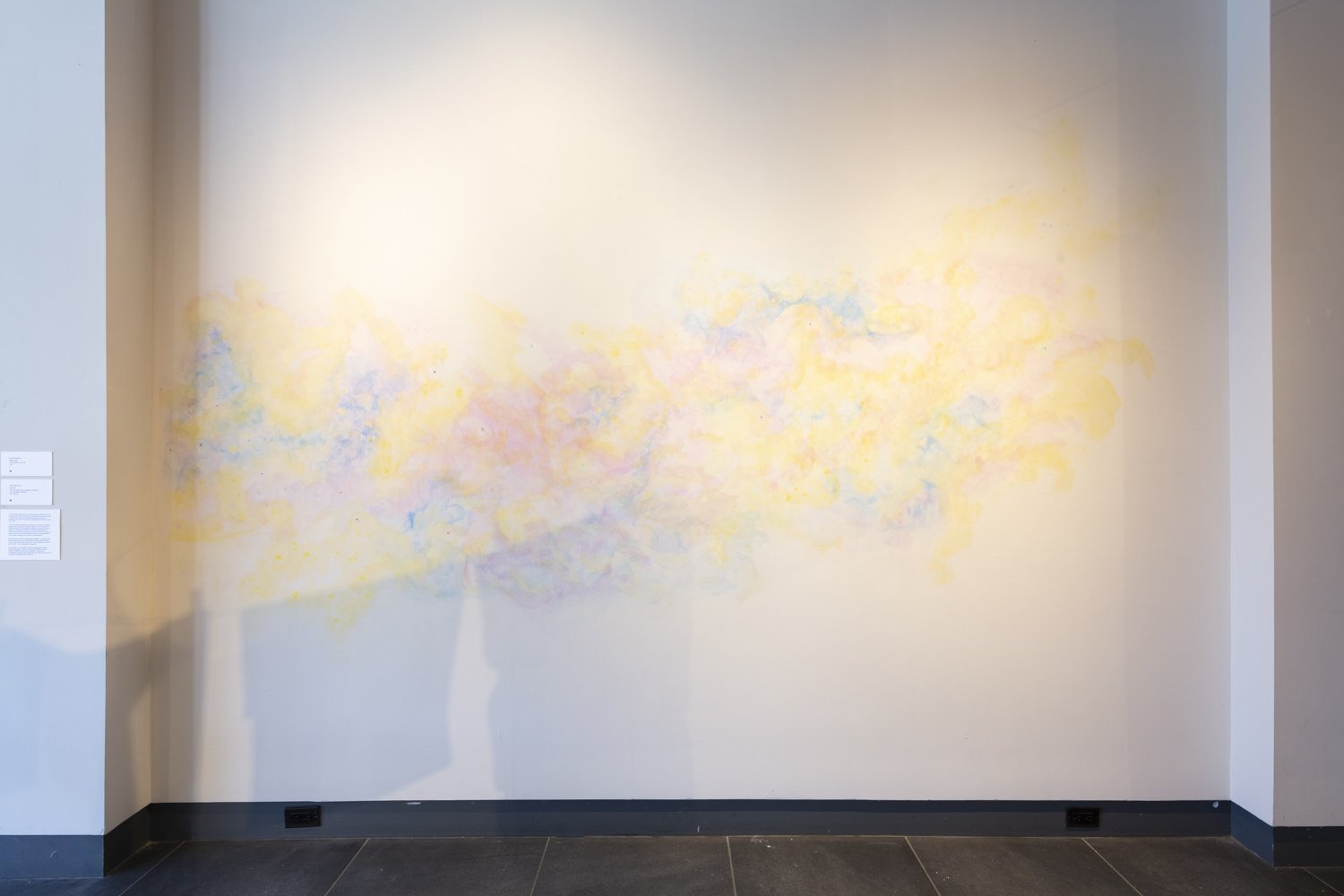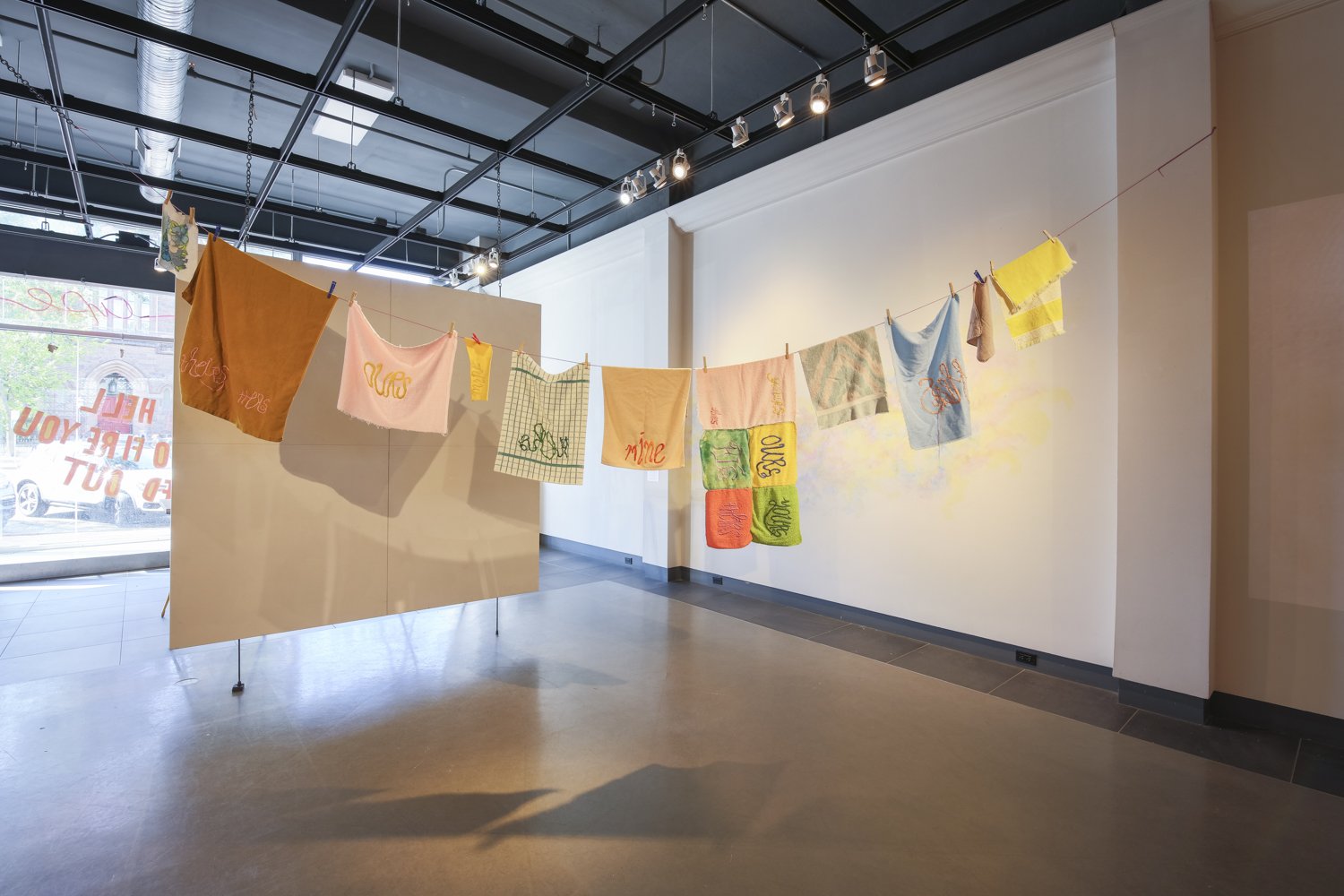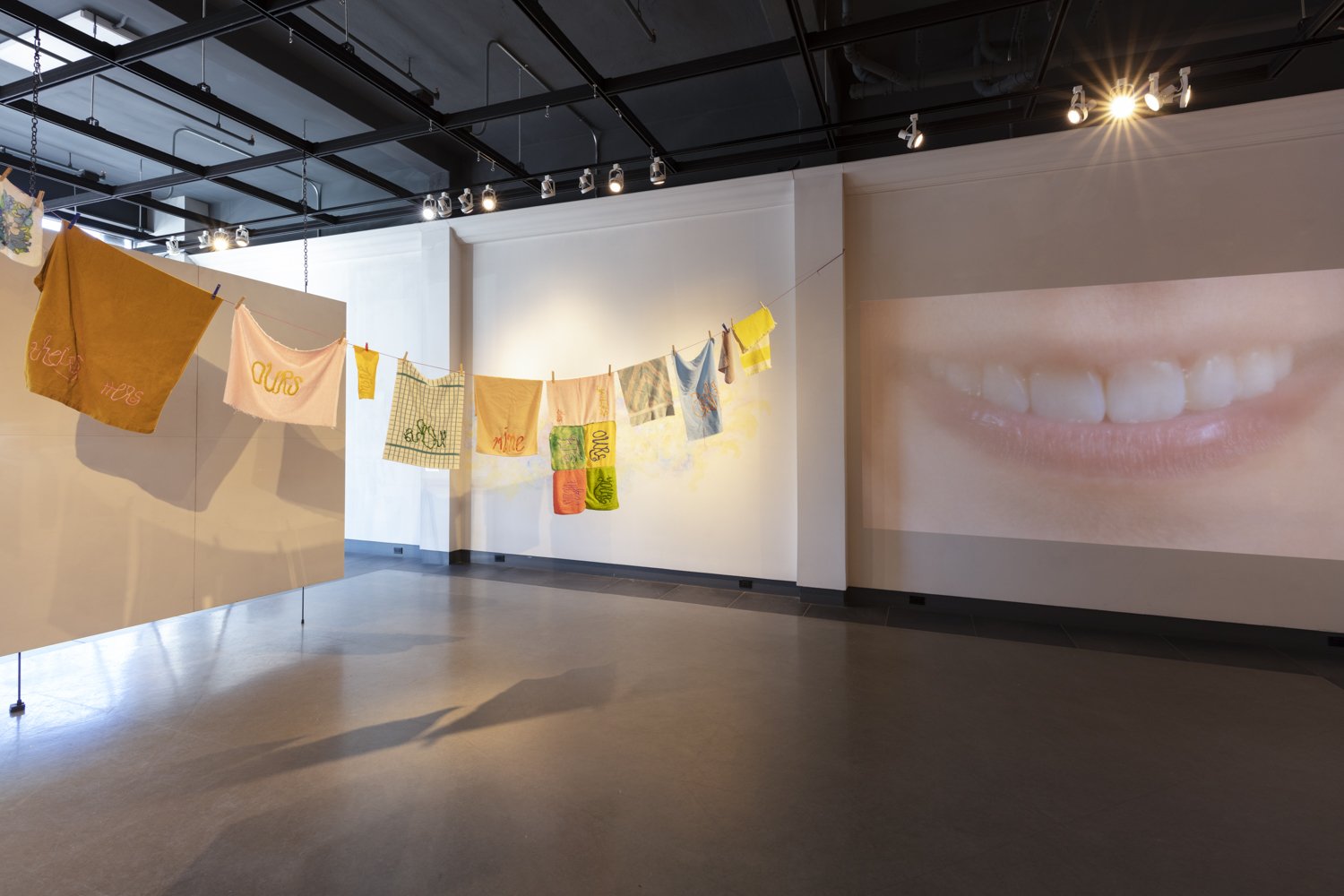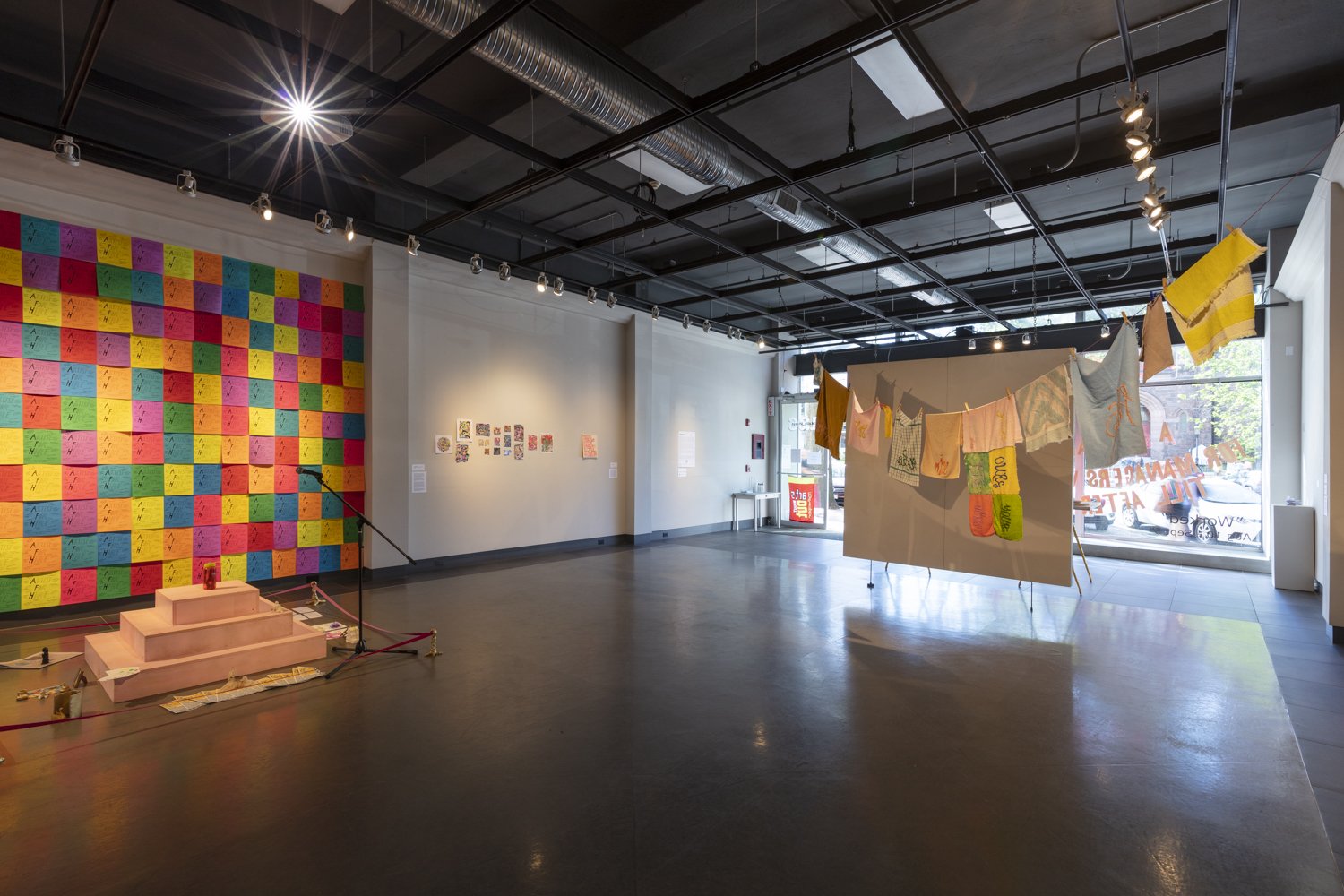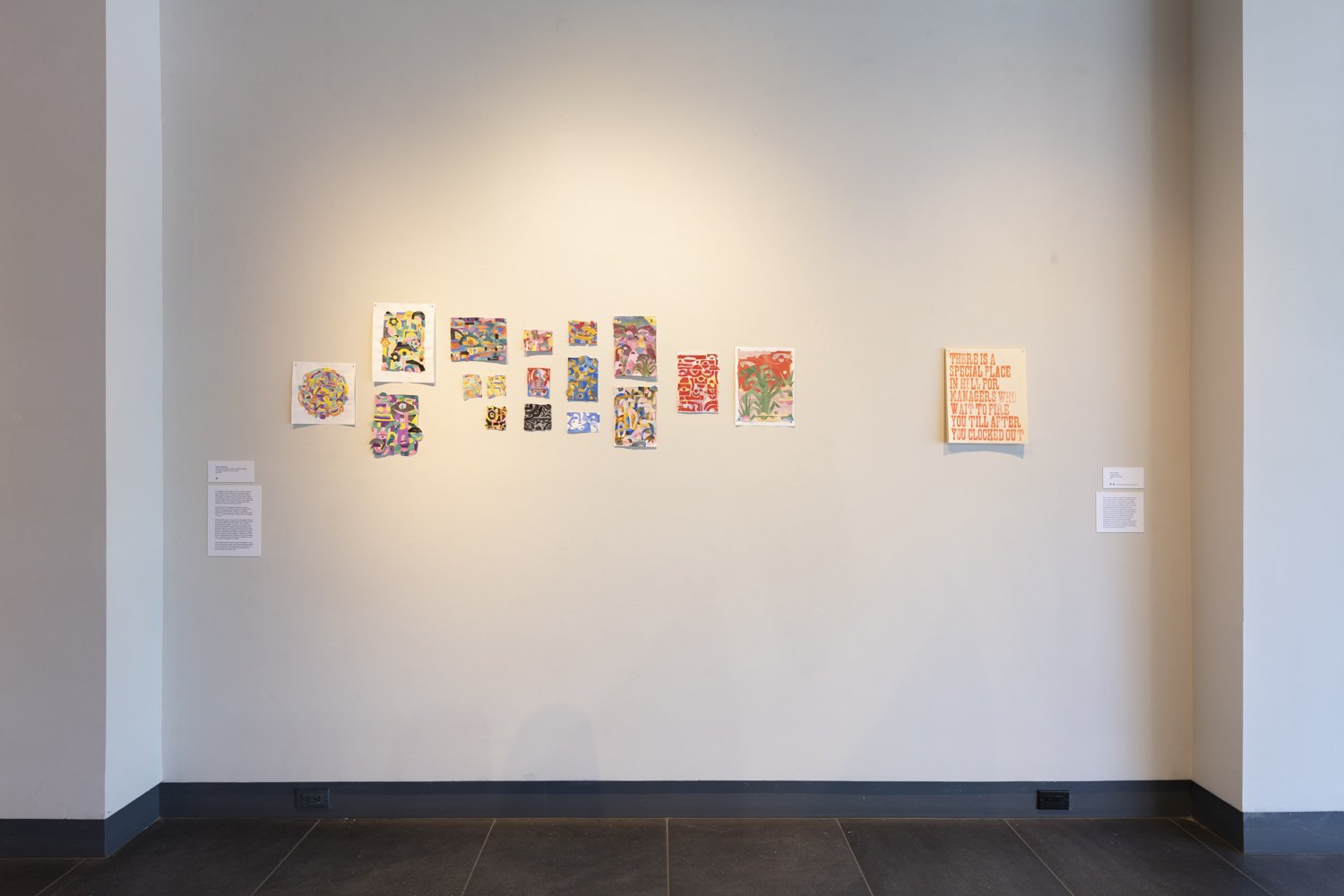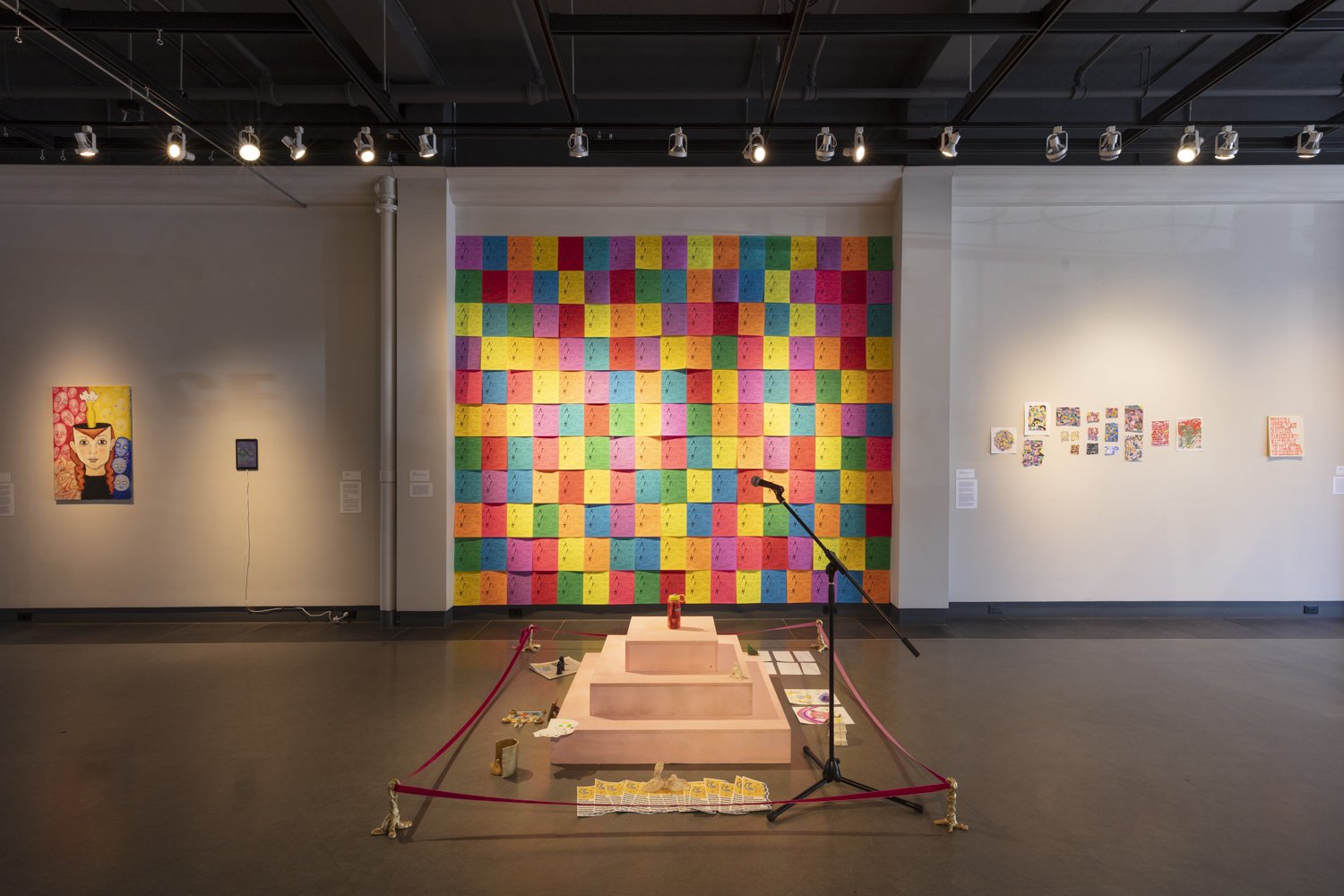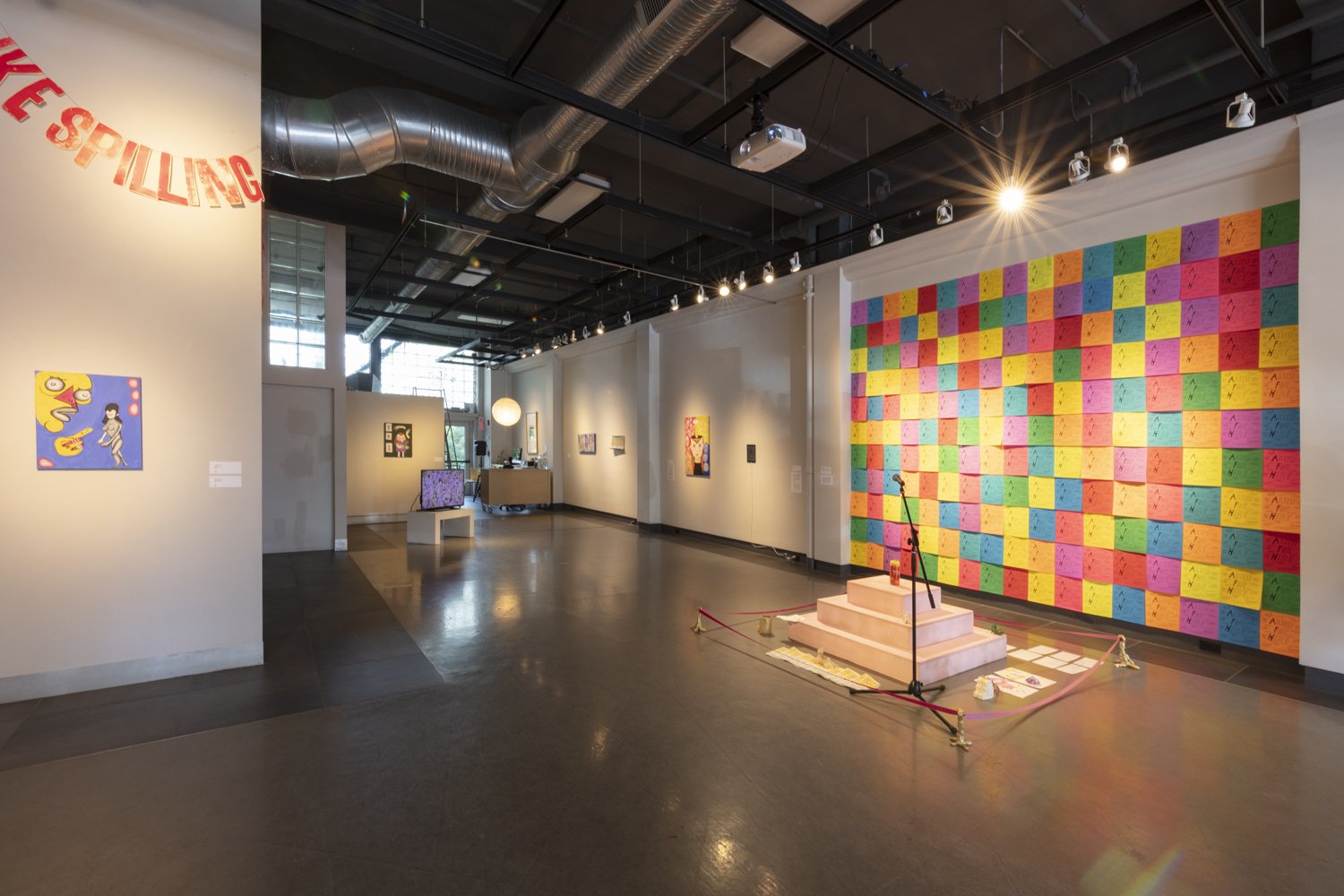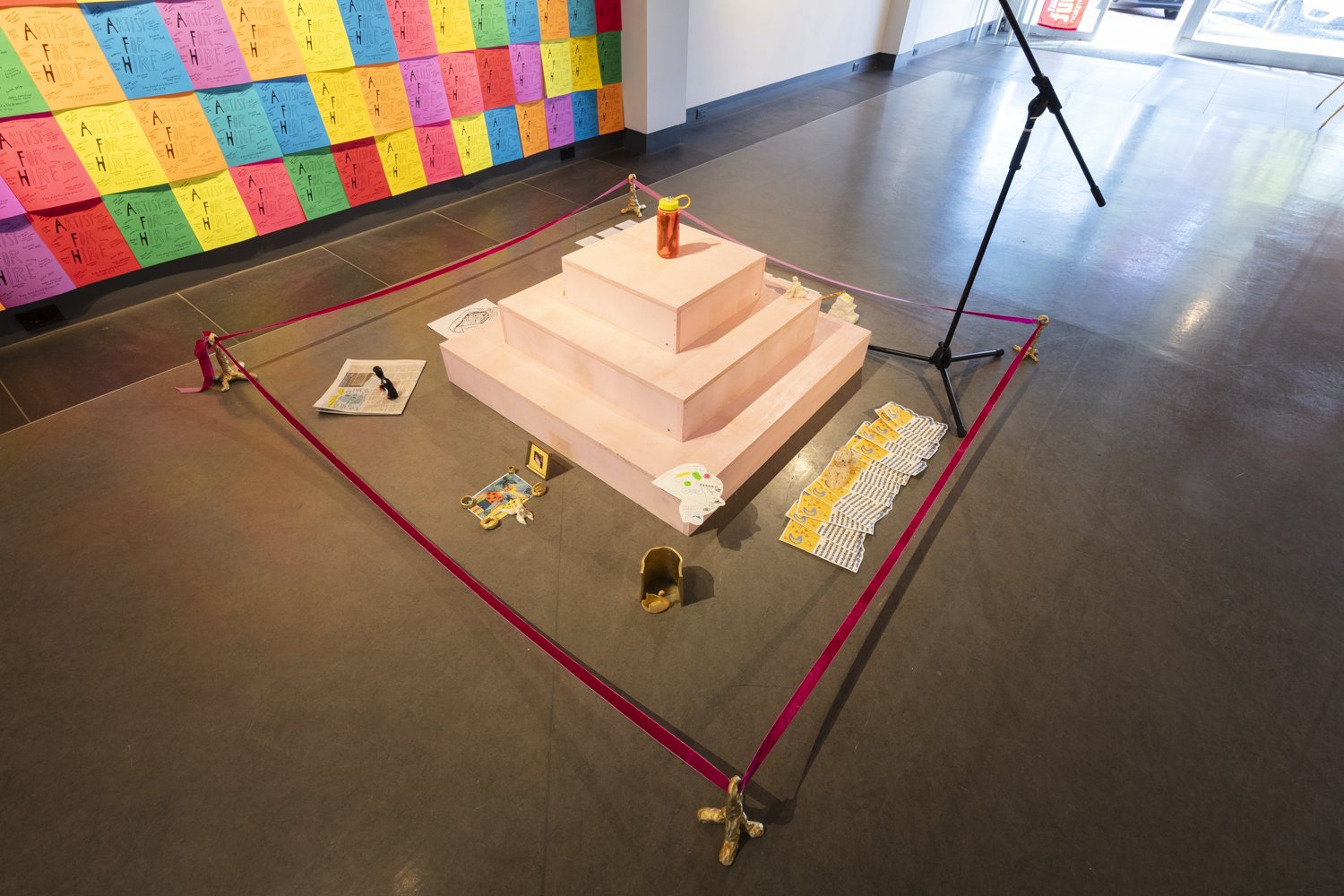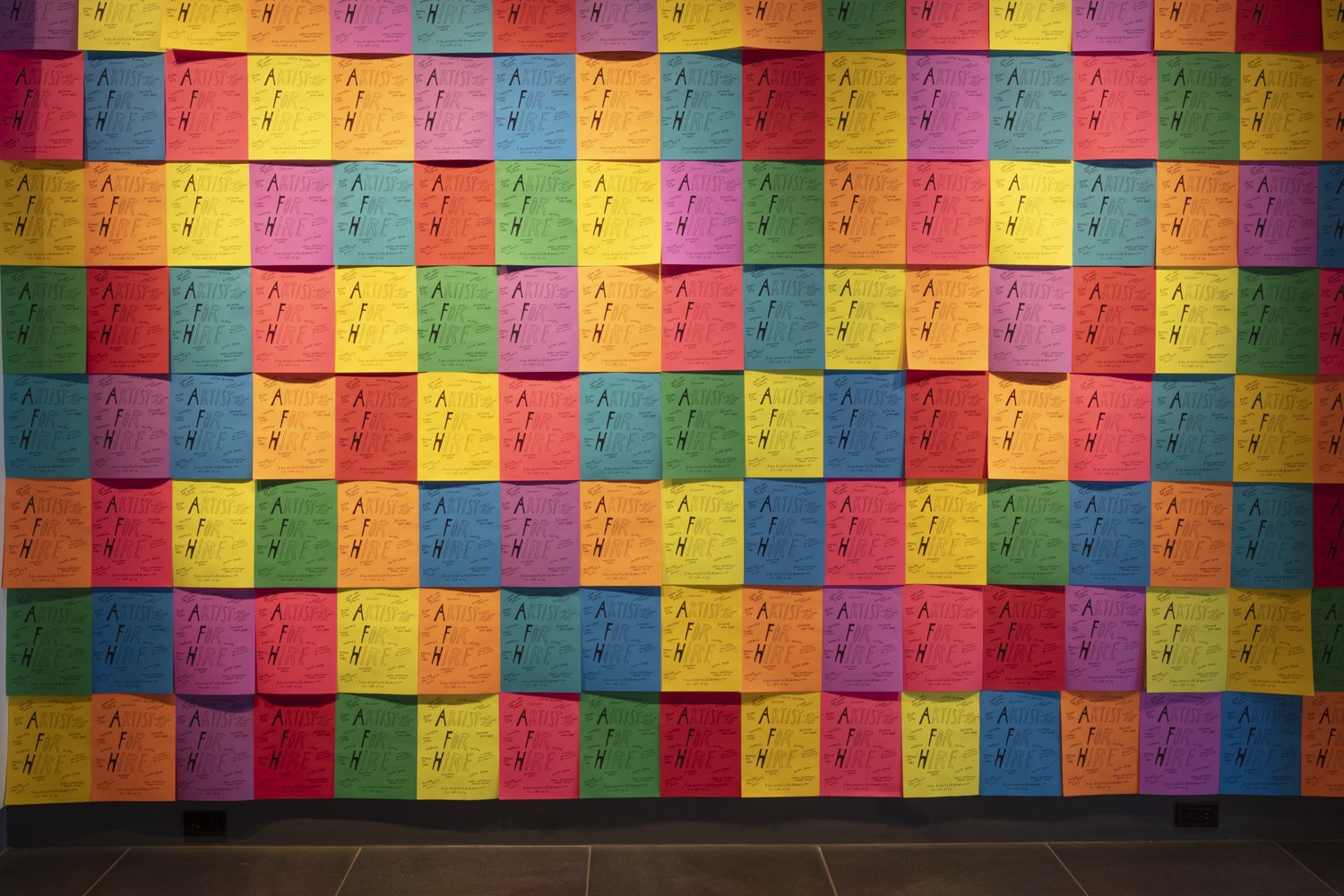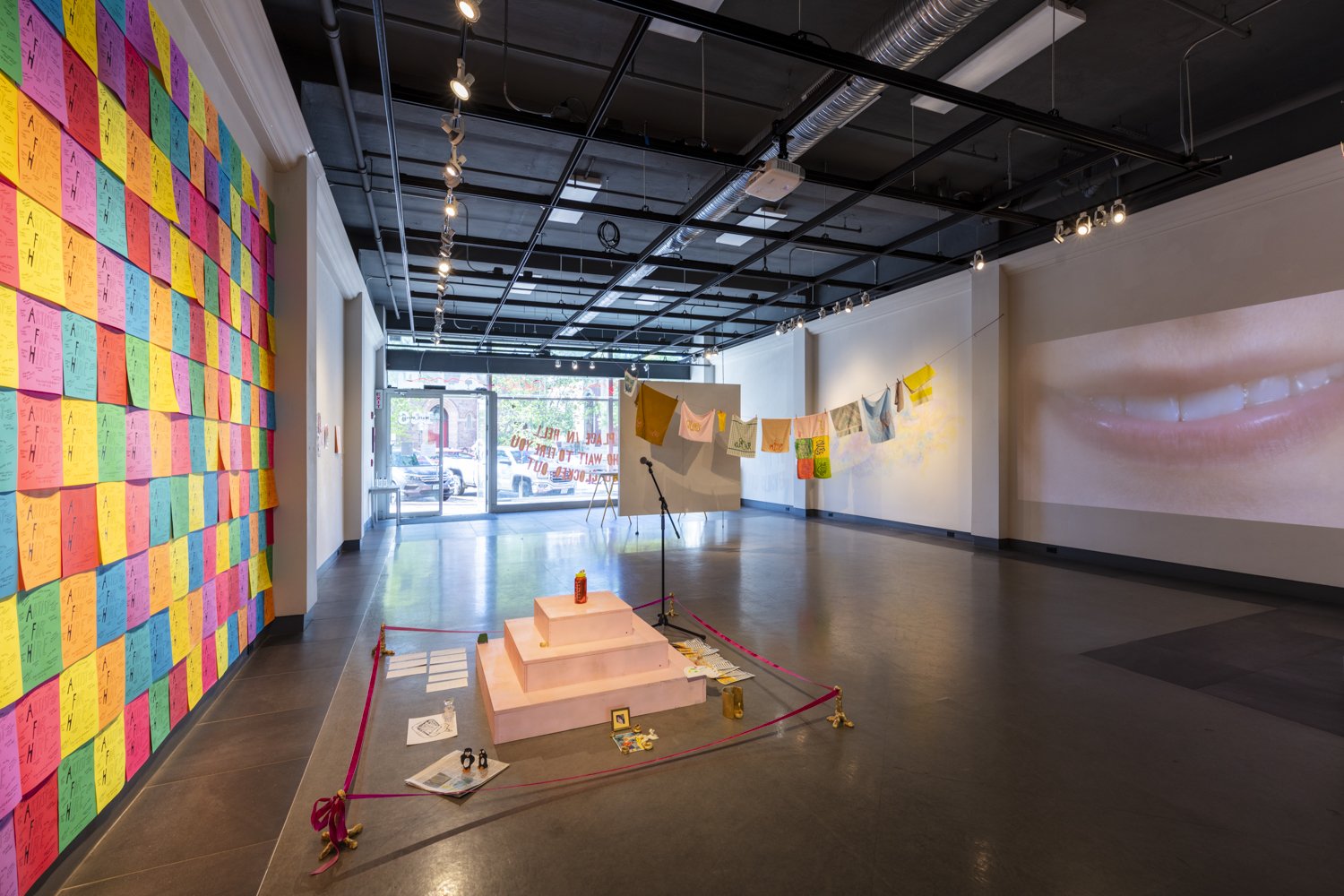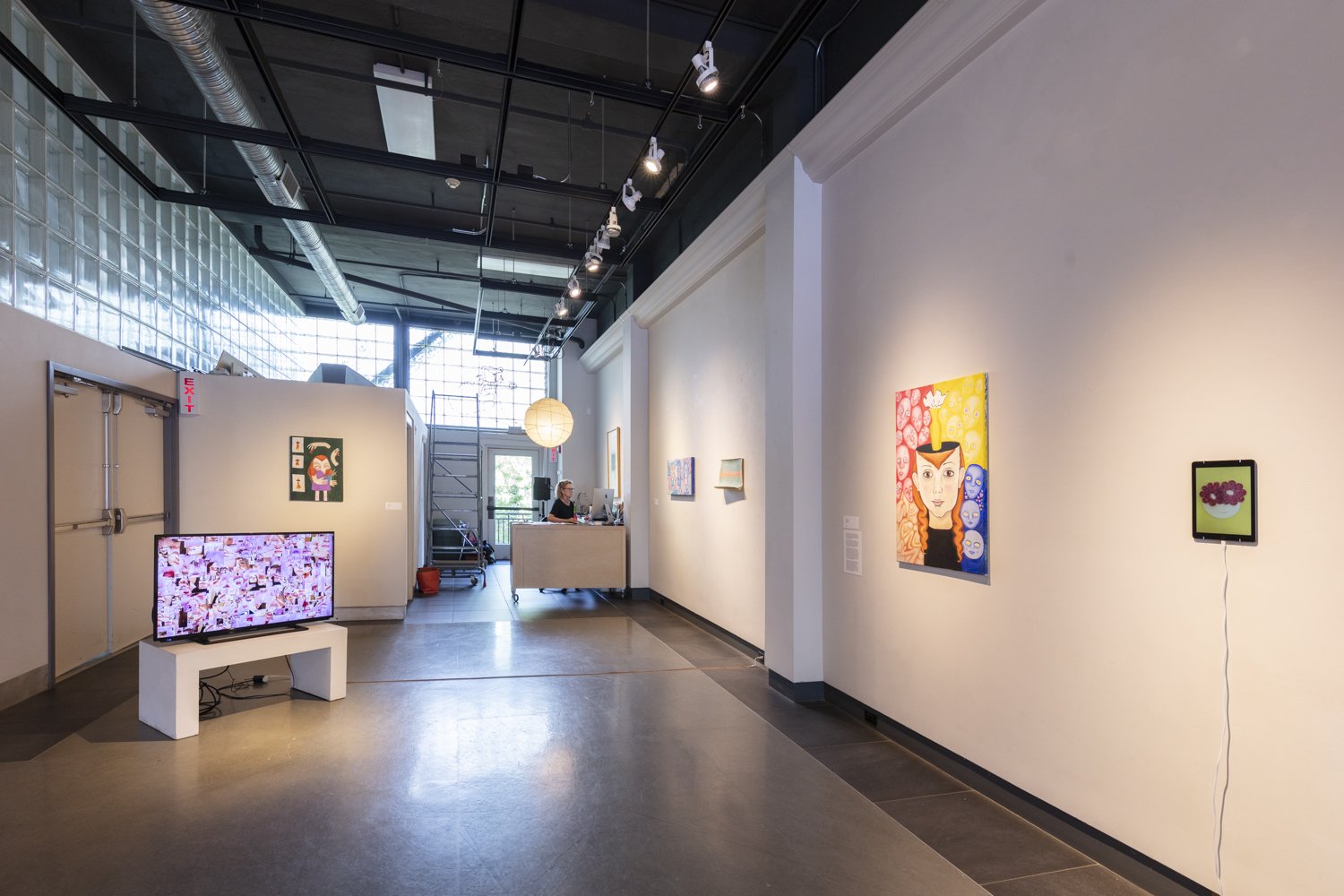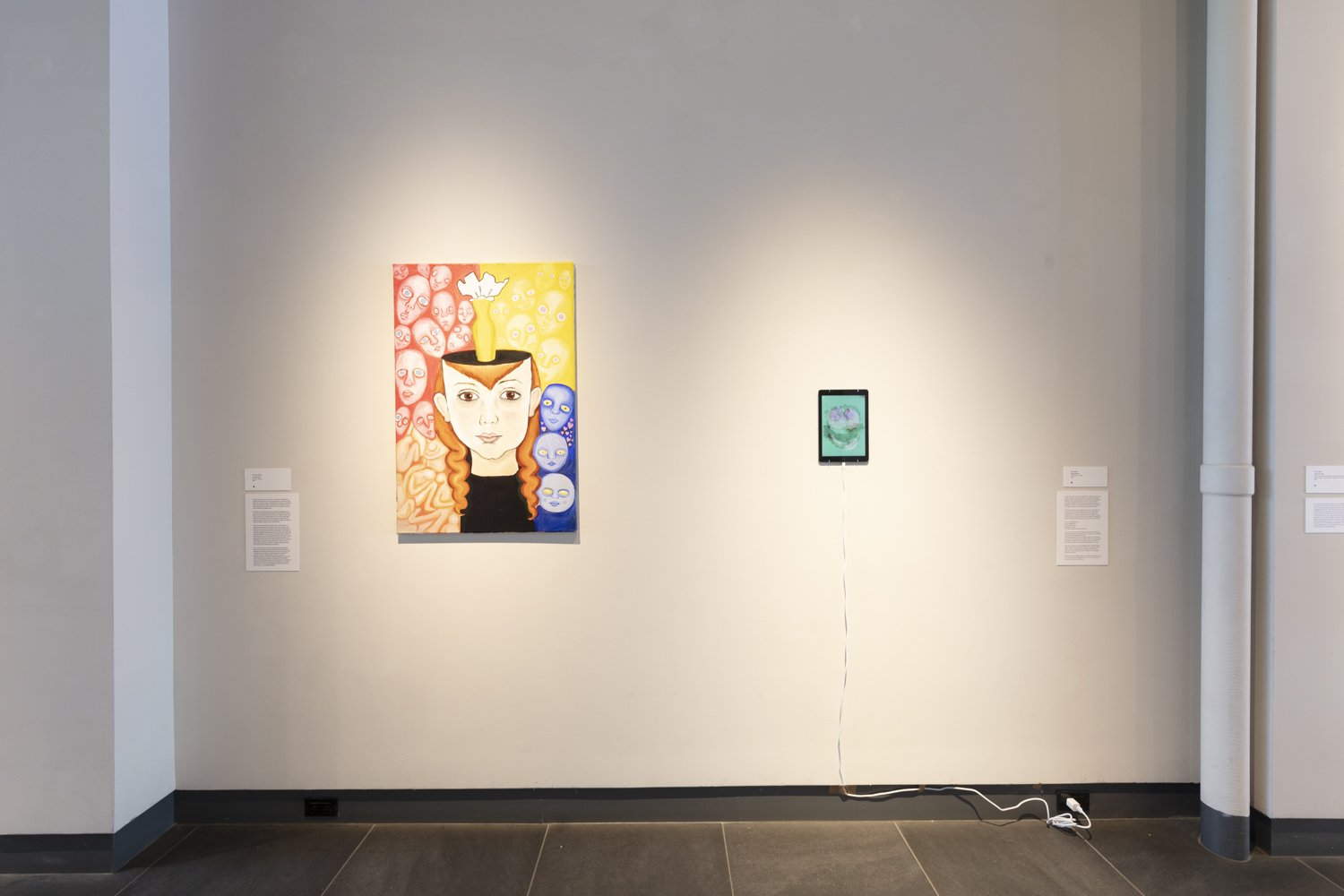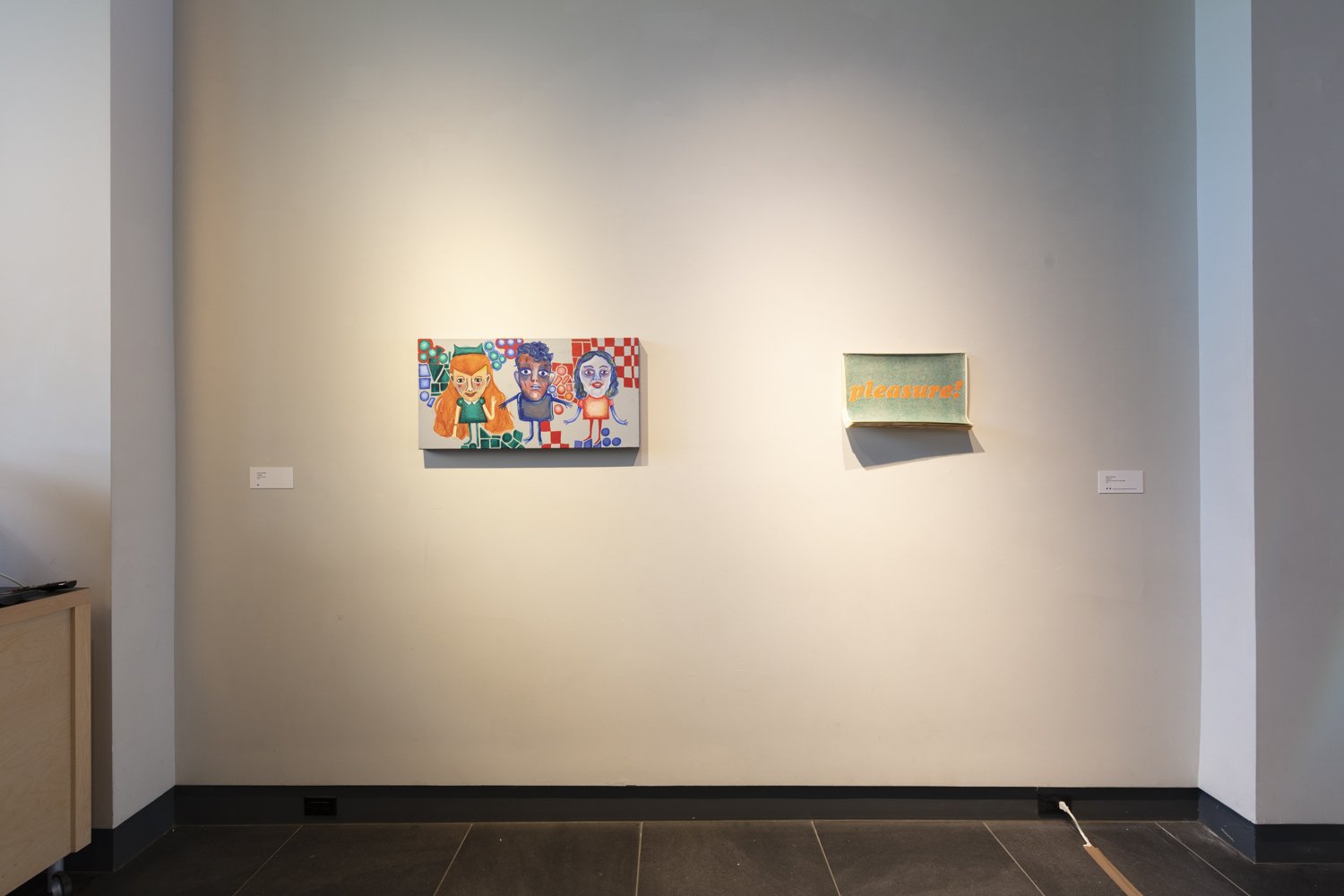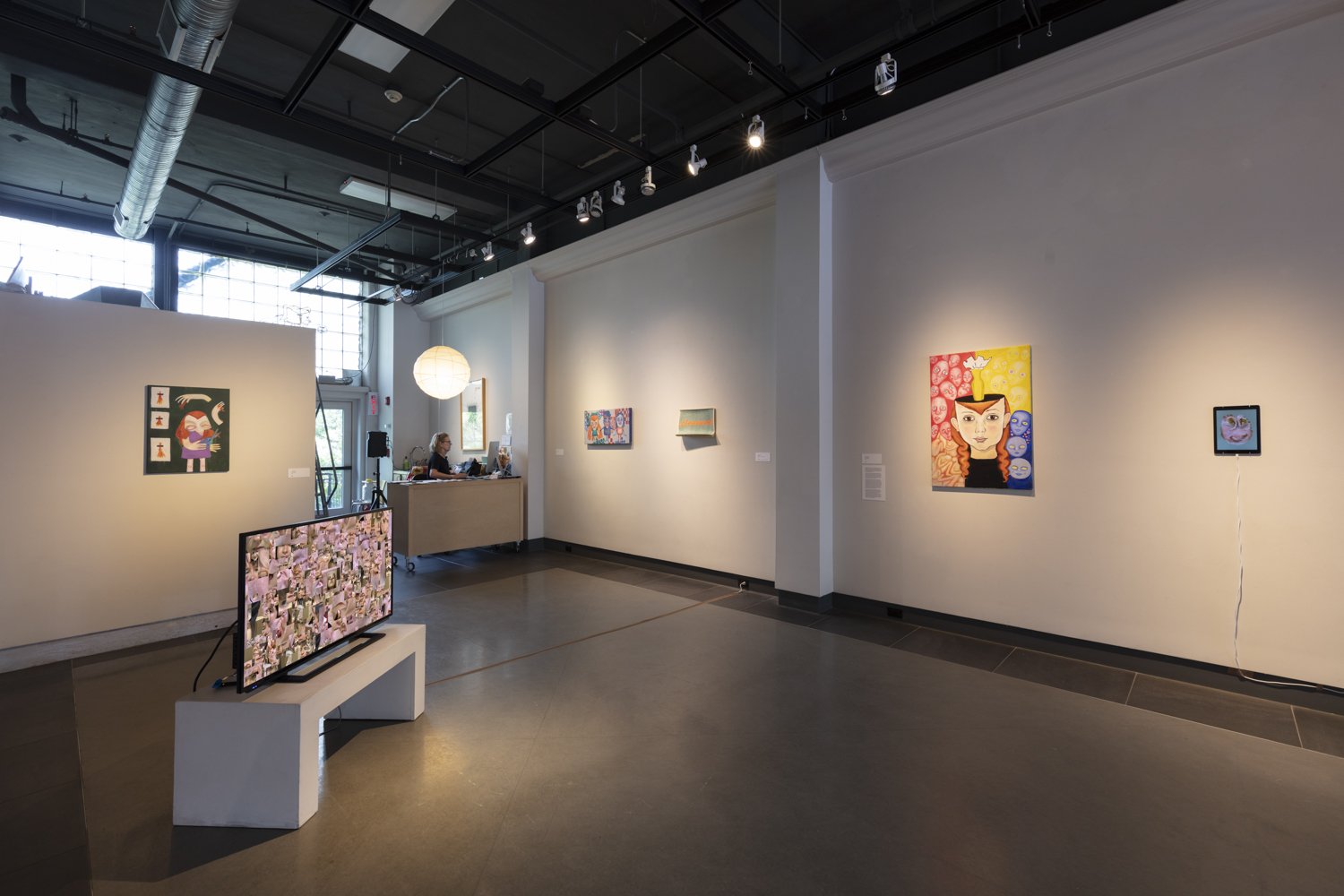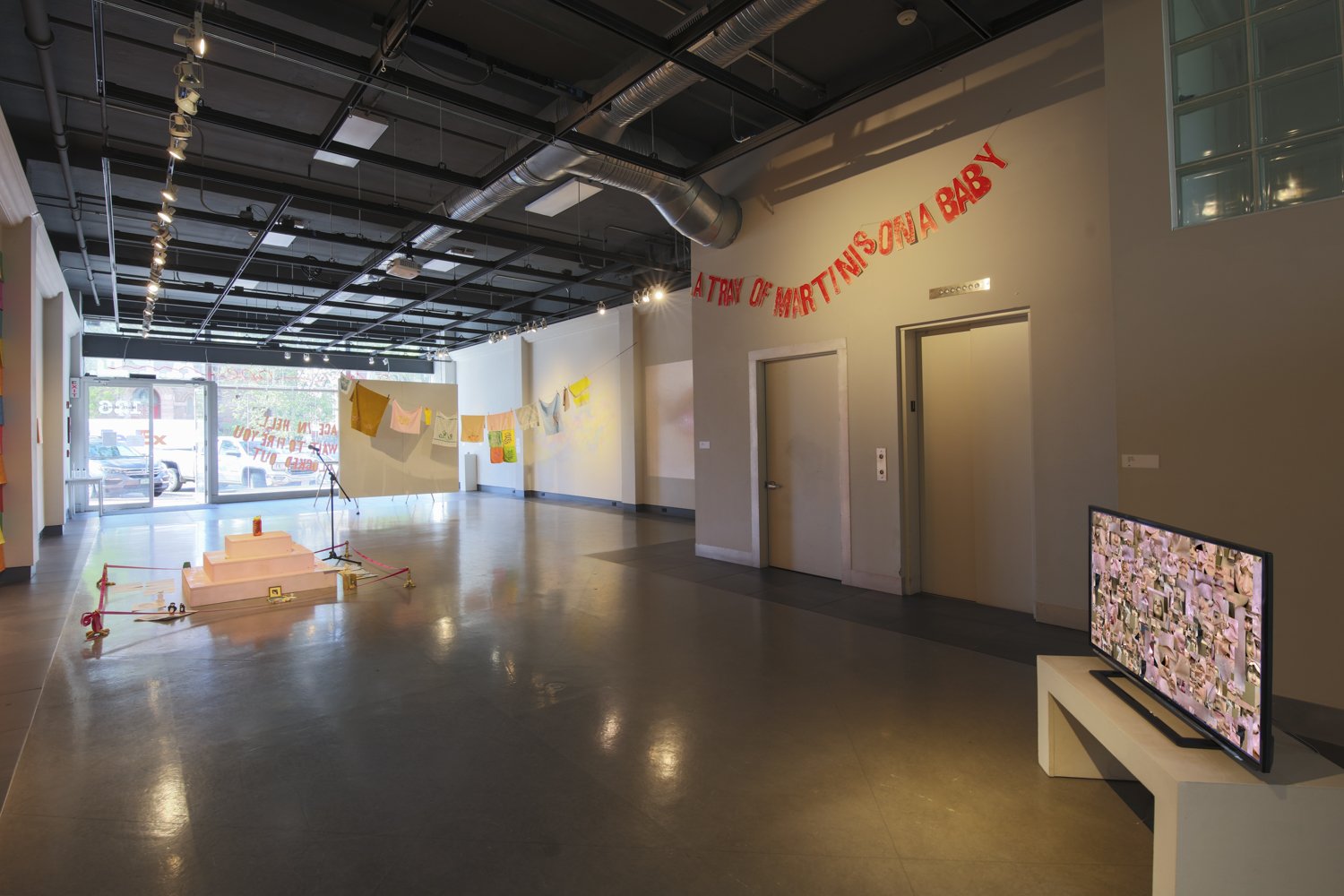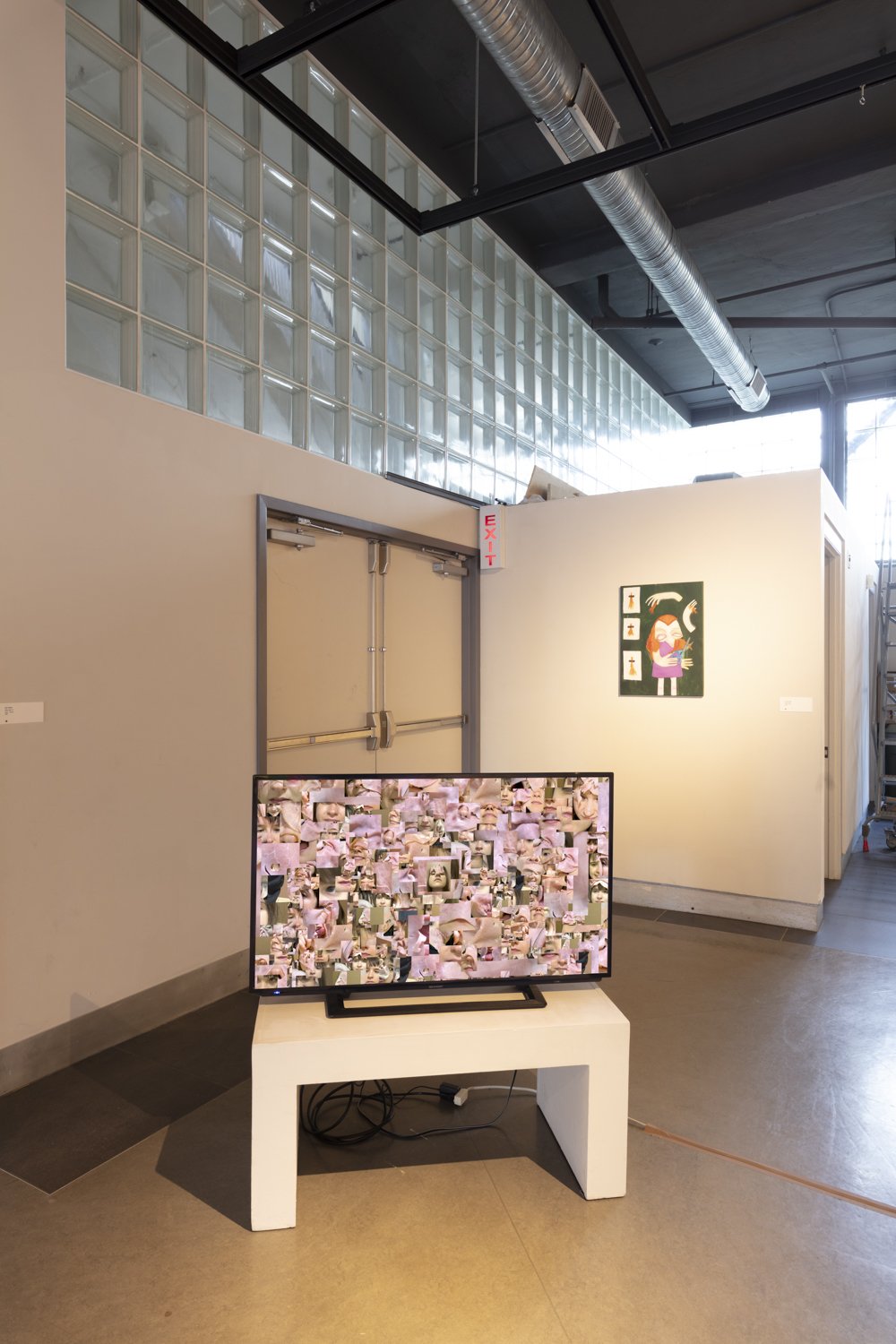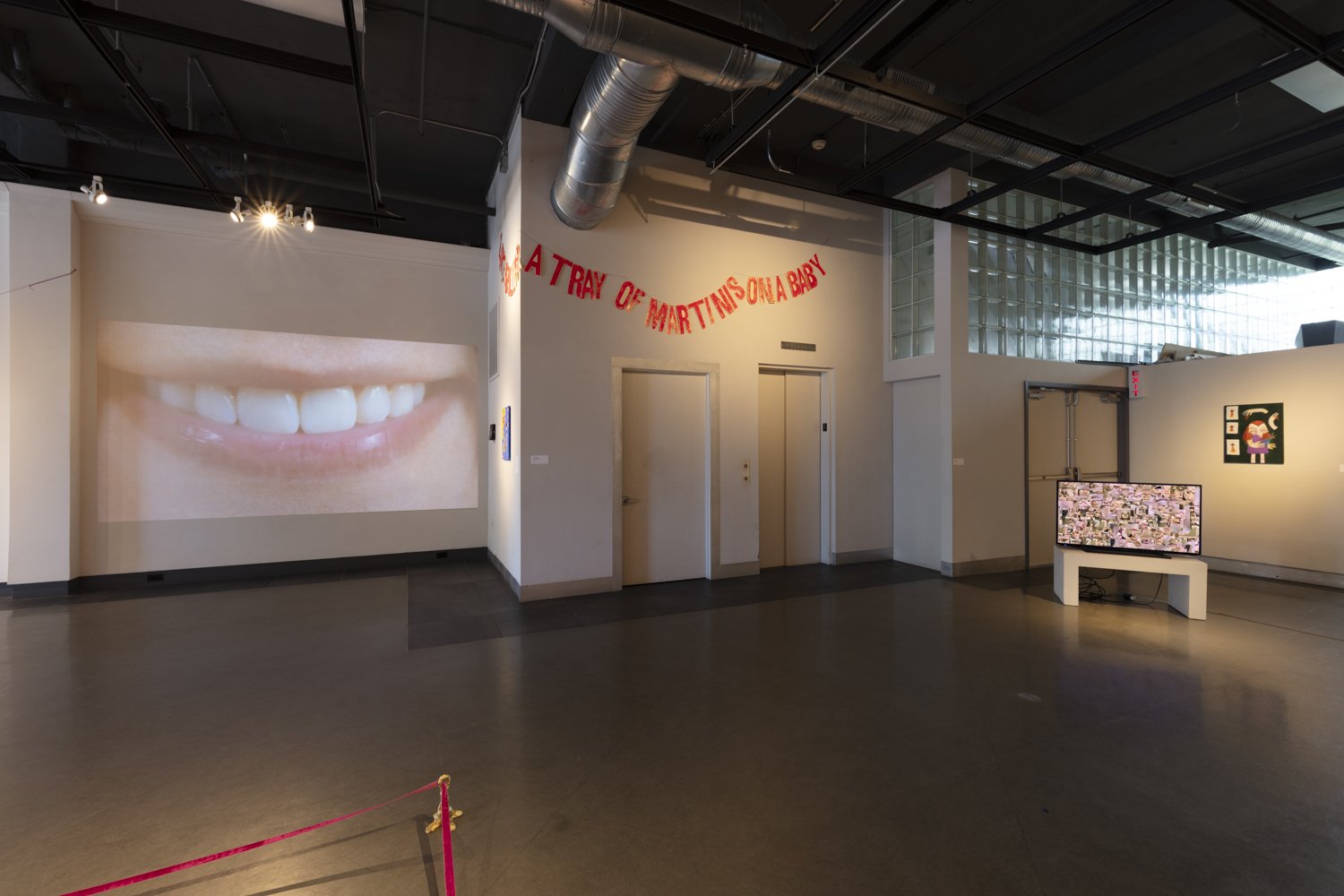Worked: Artist Labor Relations
Curatorial Project, A.P.E. Gallery, Northampton, MA, 2022
Artists include:
Sarah LaPonte, kelli rae adams, Ash Strazzinski, Eeshita Kapadiya, Roz Crews, Ella Weber, Thunder Miller
The path to a personal studio/art making career that's sustainable and financially stable is not clear, and not at all guaranteed. Not many people can live off of only selling the art that they want to make. I've never done it. I've had all sorts of roles in the art world (some which only made art making harder), but never fully relied on my own art to sustain myself. So I've constantly looked at peoples' practices and asked “how do they do it”? How do they financially make that independent practice happen, or balance the other obligations that allows them to have the time and energy to still do so? Do they have other jobs? Are those jobs art related? Does their creative or physical energy get exhausted by their job? Do they have trust funds? Do they make work when their kids are in bed? Do they sleep? Did they go to a prestigious school? Are they in debt?
Artists also have a unique relationship with work, as we have the privilege of determining how our labor should look, what resources are necessary to get the job done, what the outcome should be, and in what timeframe. This ability to manage our own time and energy can be incredibly challenging as it takes immense self-motivation, determination, confidence, and care (not to mention the budgeting, recordkeeping, promoting, networking, archiving, and other skills that people don't often think of), often on top of a full or part-time job that provides more stable financial resources. But claiming control of our time can also be so incredibly empowering. We can use our practices to grind out a big project for a deadline, we can critique grind culture itself, or we can partake in a creative act that allows us to rest or recuperate. We can declare anything we want art, and we can make art anything we need.
How do artists lean into balancing these obligations and desires? By making their day job the inspiration for their art, using their practice as a platform for discussion, or simply but boldly saying, “I can’t”? Worked explores how seven artists, who are at a variety of stages in their lives and careers, respond to their relationship with labor––through critical discourse, radical rest, and intentional play––to consider the many shapes that labor can take, be disucssed, and shared.
